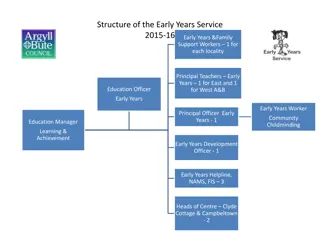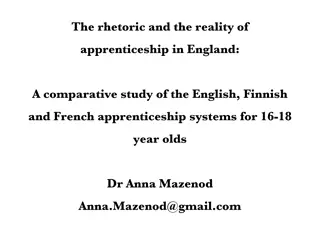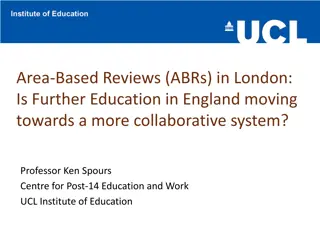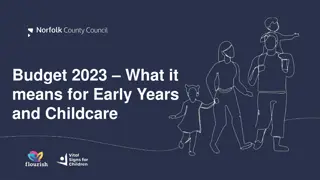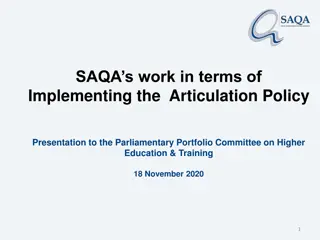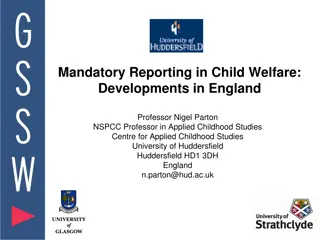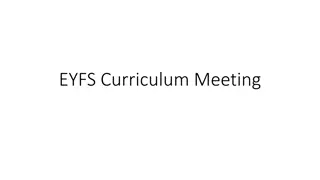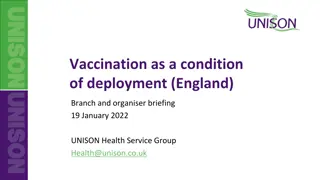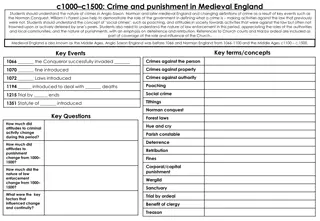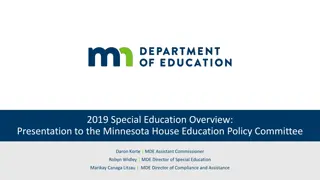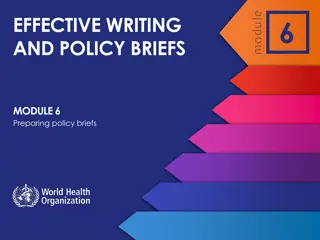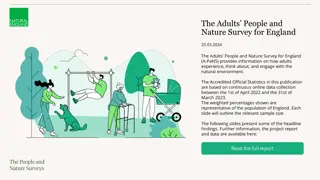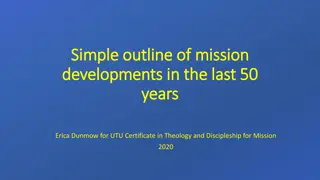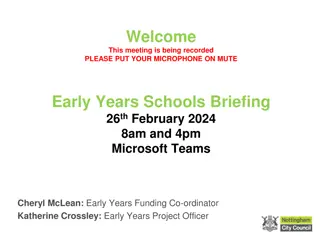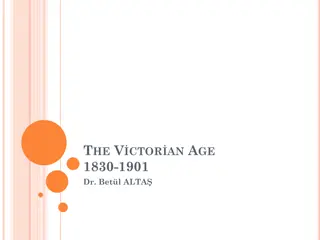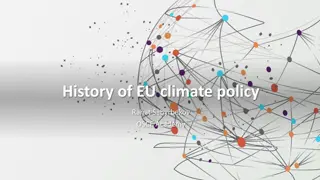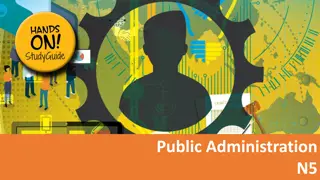Key Policy Developments in Early Years Education - England 2014
The early years education landscape in England underwent significant changes in 2014, focusing on providing entitlements for three- and four-year-olds, with recent extensions for two-year-olds. The government aimed to support school readiness and parental labor market access through various interventions, despite challenges in reaching disadvantaged children. Initiatives included improving quality, supporting early education for disadvantaged children, and implementing supply-side reforms to enhance market growth and consistency in offerings.
Download Presentation

Please find below an Image/Link to download the presentation.
The content on the website is provided AS IS for your information and personal use only. It may not be sold, licensed, or shared on other websites without obtaining consent from the author. Download presentation by click this link. If you encounter any issues during the download, it is possible that the publisher has removed the file from their server.
E N D
Presentation Transcript
Early Years Education in England Key Policy Developments November 4th2014 Patrick Flack Patrick.FLACK@education.gsi.gov.uk
Context EY in England Early education entitlement for all three- and four-year-olds of 15 hours/week (570 hours/year). Recently extended to 40% of two-year-olds. In January 2014, 641,230 three-year-olds (94% of population), and 658,680 four- year-olds (99%) receiving some sort of early education. That includes a large proportion of four-year-olds that attend school Reception classes. Objective to provide early education and develop school readiness. Local authorities purchase places from providers. Mixed market of provision, reflecting incremental policy growth in this field. 39.1% of three & fours receiving entitlement at PVI providers; 57.7% in maintained primary provision. Different for under-3s. Early intervention infrastructure around this particularly Children s Centres. Funded through local government grant. Significant state subsidies to parents for childcare costs (not just under-5s) including through Working Tax Credit and Employer Supported Childcare. Objective to support parental labour market access and to help cost of living. Being extended with introduction of Tax Free Childcare in Autumn 2015. 2
Not all children benefitting We know that disadvantaged children can benefit more from good ECEC. But poorer children less likely to take it up than their peers Fewer children known to be eligible for FSM achieve a good level of development 3
What is Government doing? Supporting improved quality Supply-side reform to grow the market Interventions to support early education for disadvantaged children 4
Improving Quality Improving qualifications: Early Years Teachers Teach First in the Early Years Apprenticeship Bursary Scheme Improving inspection: Ofsted sole arbiter, with consistent quality standards. Ofsted reforms to the Early Years Inspection Framework Improving registration: introducing a single, clear set of safeguarding and welfare requirements. Improving home learning environment: For example, promoting Five to Thrive campaign 5
Supply-side reform Improving consistency of who can offer the entitlement, by making Ofsted the sole arbiter of quality. Introducing Childminder Agencies from September 2014. These will make it simpler for people to become childminders, provide training and support. Making it easier for schools to open nurseries: Enabling schools automatically to accept two-year-olds as well as three- year-olds. Actively encouraging primary schools to open for longer. Simplifying planning rules so that nurseries can expand more easily. 6
Focus on Disadvantage (1) Early education entitlement for disadvantaged two-year-olds. Extends the 15 hour entitlement to 40% least advantage two-year- olds. Steadily improving take-up since introduced. Waiting for figures Ambition to deliver entirely through good or outstanding settings. Number of children in places 140,000 120,000 100,000 80,000 60,000 40,000 7 20,000 0 Jan-12 Apr-12 Sep-12 Apr-13 Sep-13 Feb-14 May-14
Focus on Disadvantage (2) Early years pupil premium will be introduced in April 2015. Extends model successfully used in schools since 2011: money follows the child and providers have flexibility in how to make best use of the funding. Expect providers to use it to improve quality of provision for disadvantaged children e.g. by investing in workforce. Providers will be held to account for effective use of this by Ofsted, through the inspection framework. 8



